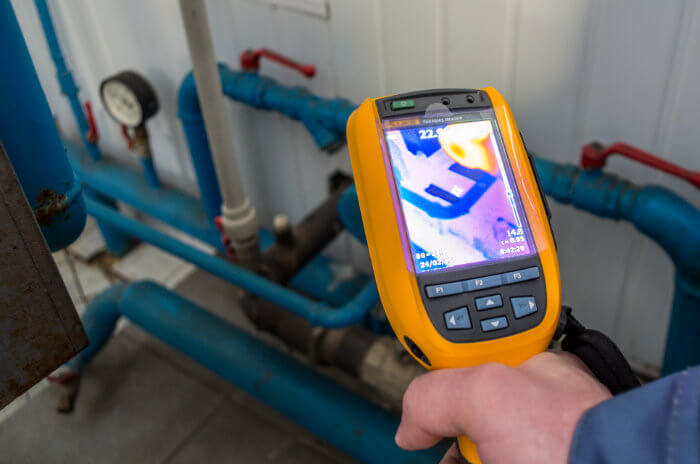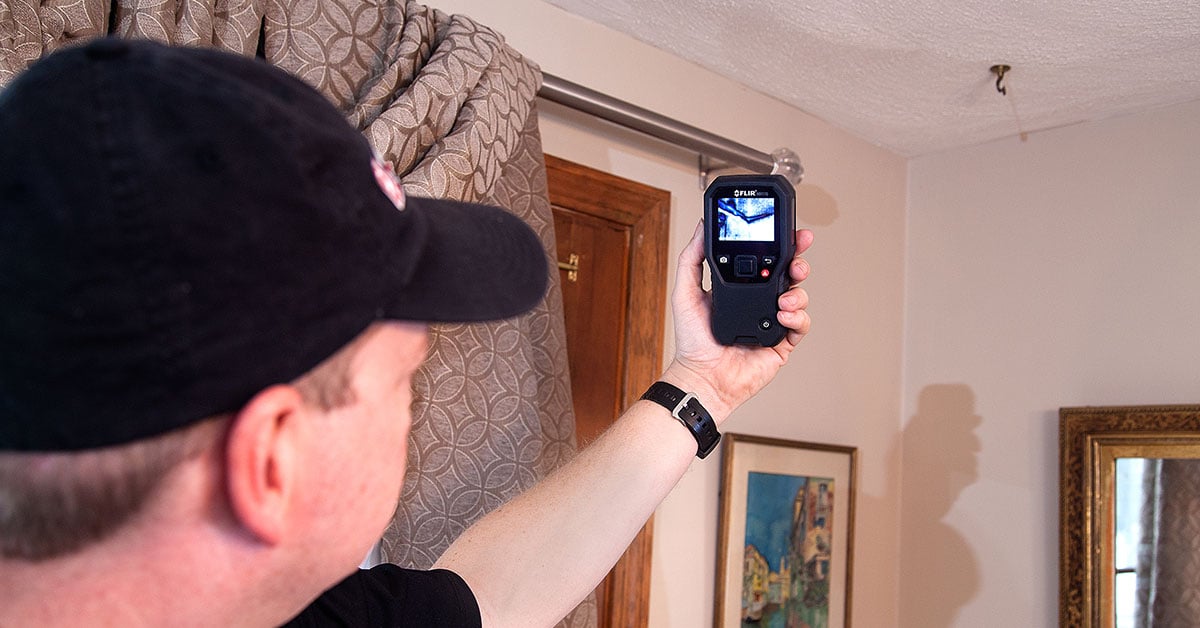Top Water Leak Detection Strategies to Safeguard Your Residential Property from Water Damage
Top Water Leak Detection Strategies to Safeguard Your Residential Property from Water Damage
Blog Article
Innovative Solutions for Early Detection of Water Leakages in Buildings and Infrastructure
As the integrity of buildings and infrastructure is extremely important, the challenge of very early detection of water leakages has actually spurred ingenious options that assure to change the way we safeguard against prospective damages. From cutting-edge leakage discovery innovations to the implementation of IoT sensors for real-time surveillance, the landscape of leakage avoidance is progressing swiftly. Artificial intelligence algorithms provide a glimpse right into the future of leakage prediction, while thermal imaging provides a non-intrusive approach for identifying surprise leaks. Automated water circulation analysis systems are reshaping exactly how leaks are identified and resolved, leading the way for a positive strategy to water leak detection. Each of these services holds the key to guaranteeing the dependability and long life of our constructed atmosphere, triggering a shift towards a much more sustainable and effective future.
Advanced Leakage Detection Technologies
Advanced leak detection innovations, equipped with cutting-edge sensing units and algorithms, play a vital role in quickly identifying and pinpointing water leakages in various settings. Electromagnetic sensing units can determine changes in electromagnetic areas triggered by water, offering yet another layer of leakage discovery capability.

IoT Sensors for Real-Time Surveillance
In the realm of modern-day water leakage detection, the combination of IoT sensing units for real-time surveillance represents a critical improvement in enhancing aggressive leak detection capabilities. These sensing units use continual monitoring of water systems, supplying real-time data on water circulation rates, pressure variations, and temperature level modifications. By leveraging IoT modern technology, these sensing units can identify also the tiniest anomalies in water use patterns, allowing very early recognition of possible leakages before they rise into major issues.
IoT sensors send information to a central system, where sophisticated formulas evaluate the information and create signals or notifications when irregularities are spotted. This real-time surveillance ability permits homeowner or center managers to quickly deal with leakages, lessening water damages, minimizing fixing prices, and saving water sources.
Furthermore, IoT sensing units can be integrated with building management systems, enabling automatic responses to identified leaks, such as shutting down water shutoffs or triggering pumps to alleviate the impact of leaks. Overall, the execution of IoT sensors for real-time discover this info here tracking dramatically enhances the efficiency and effectiveness of water leak detection in structures and infrastructure.
Machine Discovering Algorithms for Leak Prediction

One key benefit of using artificial intelligence for leakage forecast is its ability to continuously find out and boost its accuracy with time. As even more data is gathered and fed right into the algorithm, it can fine-tune its predictions and adjust to transforming problems, eventually enhancing the dependability of leakage discovery systems.
Furthermore, maker knowing formulas can assist in determining subtle indications of leaks that may go undetected by standard tracking methods. water leak detection. By examining complex information sets in real-time, these formulas can offer early warnings and notifies, permitting prompt intervention and preventive maintenance to mitigate possible water damage and associated expenses
Using Thermal Imaging for Leakage Detection
Thermal imaging modern technology offers an appealing technique for identifying water leaks in different systems and frameworks. By using infrared radiation and temperature level variations, thermal imaging video cameras can identify covert leaks that are not easily noticeable to the nude eye. When water gets away from pipes or frameworks, it frequently changes the temperature level of the bordering location, creating temperature differentials that thermal cams can catch. These temperature irregularities are then translated right into visible images, highlighting the exact area of the leakage.
Among the vital site link benefits of thermal imaging for leak detection is its non-intrusive nature. Unlike traditional methods that might require burglarizing wall surfaces or floors to find leakages, thermal imaging permits for non-destructive screening. This not only saves time and reduces costs however also lessens interruption to the structure or framework being evaluated. In addition, thermal imaging can rapidly scan huge areas, offering an extensive overview of potential leakage sources in a timely fashion. Overall, the usage of thermal imaging technology improves the effectiveness and accuracy of water leak discovery, making it a beneficial tool for maintaining the honesty of buildings and facilities.
Automated Water Flow Analysis Systems
Exactly how can automatic water circulation analysis systems transform the detection and monitoring of leakages in numerous systems and infrastructures? Automated water circulation analysis systems use an aggressive strategy to leakage detection by continuously keeping an eye on water flow rates and patterns. By establishing standard data, these systems can rapidly determine discrepancies that may show a leak, enabling punctual treatment to stop extensive damage.
These systems use advanced formulas to assess real-time information and provide prompt signals when anomalies are detected, enabling speedy action to be taken. Additionally, computerized water circulation analysis systems can be integrated with structure monitoring systems or IoT platforms, enhancing total effectiveness and allowing remote monitoring capabilities.
Furthermore, the data gathered by these systems can be used for anticipating maintenance objectives, helping to recognize potential weak factors in the framework prior to leakages take place. On the whole, the execution of automatic water flow analysis systems can considerably boost leak detection and monitoring methods, inevitably causing set you back savings, minimized water wastefulness, and enhanced sustainability in structures and infrastructure.

Final Thought
To conclude, the combination of advanced leak detection technologies, IoT sensing units, artificial intelligence algorithms, thermal imaging, and automated water flow evaluation systems offers innovative services for very early discovery of water leakages in buildings and infrastructure. These modern go to the website technologies make it possible for real-time monitoring, forecast of leakages, and efficient detection approaches to stop water damage and wastage. Applying these options can aid in maintaining the stability and sustainability of water systems in numerous setups.
Report this page